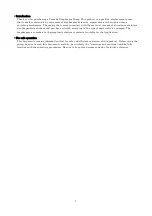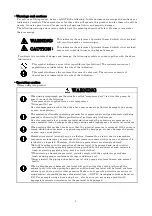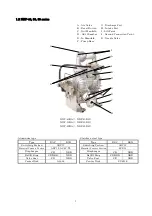
11
3.
Connection
3.1 Connecting fluid piping
1) Connect a hose to the valve on the suction-port side and the valve of the discharge-port side of the
pump.
2) Connect a hose on the suction-side intake and the discharge-port side to the respective vessels.
CAUTION
- Use a flexible hose to absorb pump vibration, and ground the hose.
- Make sure that there will be no external force on any connection part of the pump. Be
especially careful not to have the pump support part of the weight of the hose and the
piping.
- Use a sturdy hose that will not collapse under the strong suction of the pump. Also, make
sure the hose is of more than sufficient pressure rating.
- Use a hose of a diameter the same as or larger than the pump's ports. If you use a hose of
smaller diameter, the pump's performance will be adversely affected, and it may even
malfunction.
- Verify that the particle size doesn’t exceed the particle size limitation (see [9.1 Main
specifications]).
If it exceeds the limitation, attach a strainer to the pump to prevent larger particle from
entering the pump. Failure to do so may cause damage to the pump.
- When testing the piping, either install a valve between the pump's suction inlet and the
discharge outlet and piping, or disconnect the pump from the piping and install plugs so
that there will be no pressure from outside.
- We have done the operation verification of the pump by air. To prevent dust into the
material to be pumped, run the pump dry to clean the inside before finishing installation
work.
Fig3.1
Содержание NDP-25 series
Страница 19: ...18 9 2 2 NDP 40 series 9 2 3 NDP 50 series ...










































